This article is from Alibaba DevOps Practice Guide written by Alibaba Cloud Yunxiao Team
Alibaba's application O&M platform has supported the online deployment, scaling, resource management, and O&M change operations for most of its applications, including more than six years of development. A rich and stable set of O&M atomic services has been gradually developed. We proposed an orchestration-oriented O&M solution to maximize the value of these atomic services and build the middle platform capabilities of the application O&M platform.
Orchestration-oriented O&M refers to the simple orchestration service in which users (such as PaaS services and development, O&M, and operation roles) flexibly assemble multiple atomic components to meet business needs. Different business processes are constructed to handle a complete O&M requirement. It can help users standardize, manage, and execute automated O&M operations, define required operations in the form of templates, and run the templates. It improves the overall O&M efficiency, enhances the security of O&M operations, and avoids manual O&M errors.
In the application O&M field, most of the practices are based on workflows and work order management to implement corresponding O&M change operations. However, traditional O&M workflows have certain shortcomings in maintenance costs and scalability, lacking effective process lifecycle management methods.
These problems can be divided into the following three categories:
The core concepts of orchestration-oriented O&M are service components and O&M orchestration. We register O&M atomic services as components based on platform specifications and host them to a unified component pool for maintenance and management. Users can select components in the component pool as needed, assemble them into O&M workflows in a proper way, and execute to complete the expected O&M change tasks. Orchestration-oriented O&M aims to create an efficient, stable, and secure O&M platform.
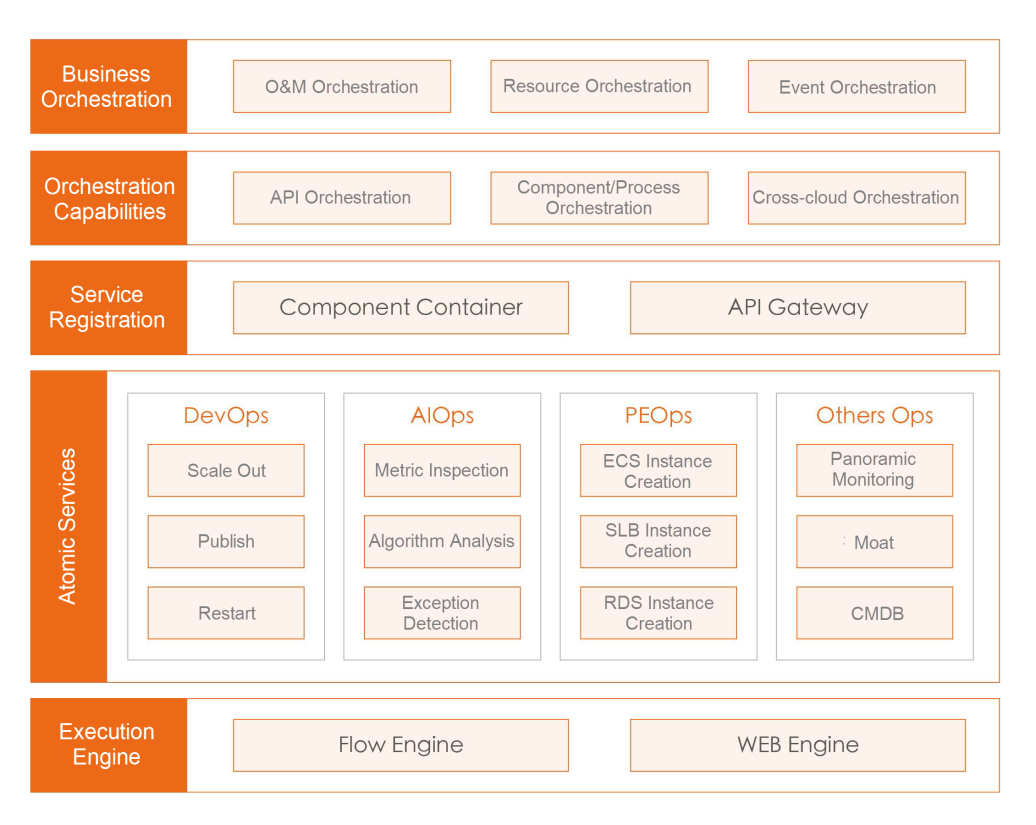
The architecture has five layers from bottom to top. The first layer is the process engine and the container engine, which are the executors of atomic services. The second layer is the definer, which defines different types of O&M atomic services. The third layer is the registrant, which registers atomic services as components. The fourth layer is the process orchestrator, which provides the core orchestration capabilities. The fifth layer mainly provides scenario-based orchestration capabilities, providing additional feature support for different scenarios.
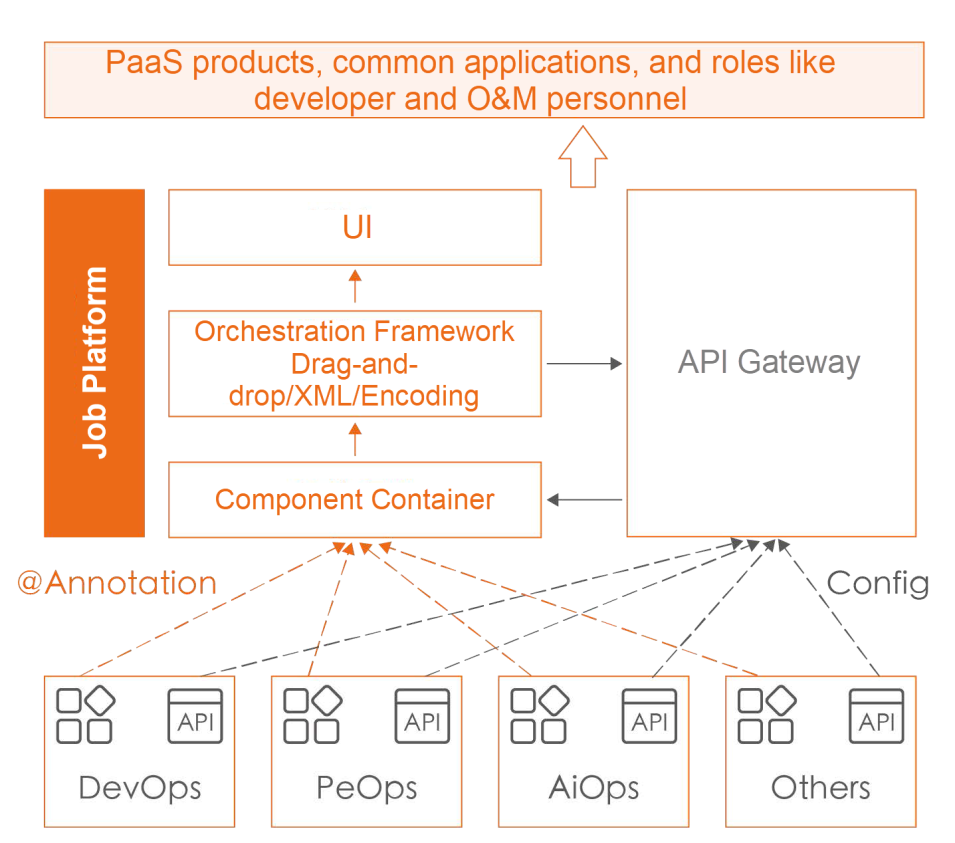
The integrated services can register a Rest API with API Gateway to expose the service externally through a unified gateway. The gateway must implement standard authentication and authorization policies and API lifecycle management, circuit breaking, and throttling. In addition, APIs registered to the gateway must be registered in the component pool of the job platform. If the process engine is introduced in the integrated service, the corresponding atomic components must be directly registered in the remote component pool. Then, the convergence and unified management of all atomic components can be completed through the job platform. Based on this, the business side can select the corresponding components from the component pool and assemble them as needed and set the process input through the custom form function to trigger the process at the same time. When a process is executed, its execution engine subsystem performs remote scheduling and drives the final service provider to run relevant functional components.

The key capabilities are listed below:
Specifically:
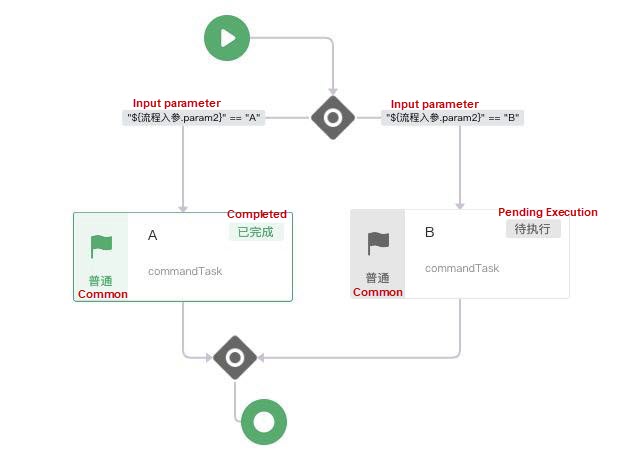
Let's take application scale out as an example:
1. Visually orchestrate the application scale out template:
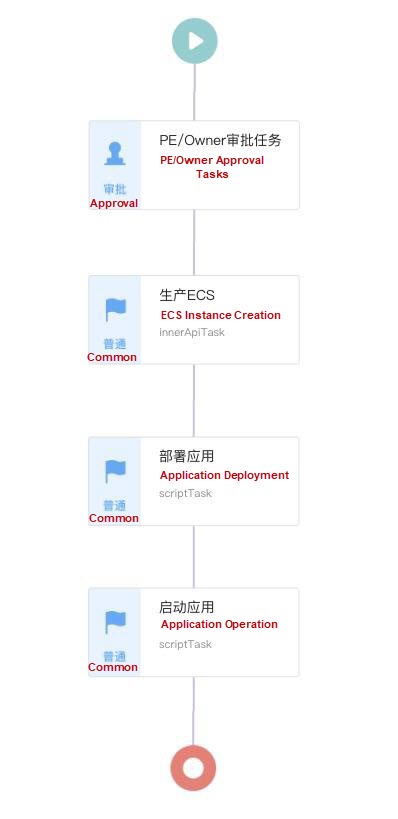
2. Submit the form and execute the application scale-out template:

3. Query the execution progress and results:
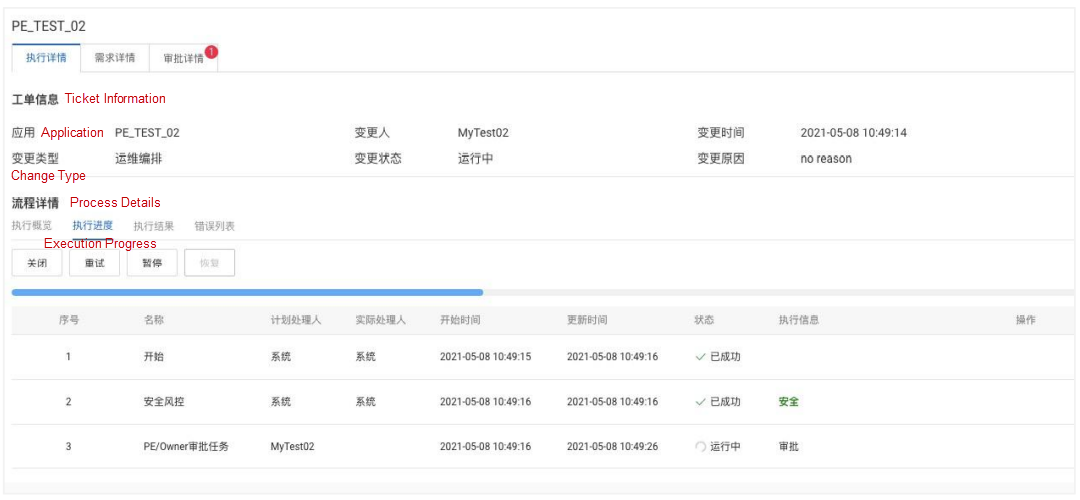
Orchestration-oriented O&M provides efficient, flexible, and stable O&M services for enterprises. Based on the business management requirements of enterprises, visualized user orchestration interfaces, control elements, and mature and stable module components can be used. The orchestration-oriented O&M tools can help teams quickly build light-asset, high-performance, and personalized IT O&M tools, assisting the transformation of traditional O&M and accelerating enterprise digitalization.

1,302 posts | 459 followers
FollowAlibaba Cloud Community - February 4, 2022
Alibaba Developer - July 13, 2021
Alibaba Cloud Data Intelligence - August 14, 2024
Alibaba Cloud Community - February 28, 2022
Alibaba Clouder - November 26, 2020
Alibaba Cloud Community - February 3, 2022

1,302 posts | 459 followers
Follow Bastionhost
Bastionhost
A unified, efficient, and secure platform that provides cloud-based O&M, access control, and operation audit.
Learn More Managed Service for Grafana
Managed Service for Grafana
Managed Service for Grafana displays a large amount of data in real time to provide an overview of business and O&M monitoring.
Learn More Resource Management
Resource Management
Organize and manage your resources in a hierarchical manner by using resource directories, folders, accounts, and resource groups.
Learn More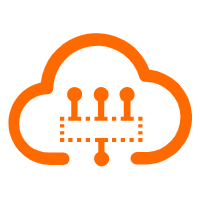 Serverless Workflow
Serverless Workflow
Visualization, O&M-free orchestration, and Coordination of Stateful Application Scenarios
Learn MoreMore Posts by Alibaba Cloud Community